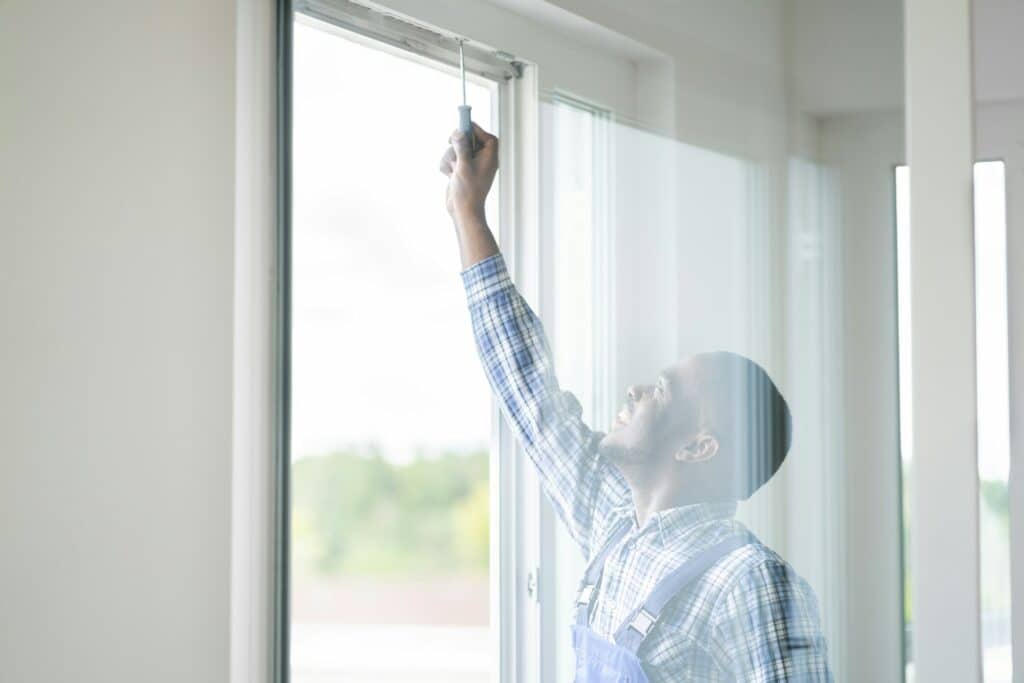When a storm is on the horizon, making sure your home is prepared can help keep everyone safe. Getting ready well before the storm hits means you won’t be rushing around at the last minute, and it can also help reduce damage to your property.
Storms can bring strong winds, heavy rain, and flying debris that can cause serious harm if you’re not prepared. Simple steps like securing doors and windows, tidying up your yard, and having a plan in place make a big difference. Taking the time now to prepare can mean less stress and more safety for you and your loved ones.
It’s important to know what to do and to act quickly when a storm approaches. By following some basic steps, you can rest easier knowing that you’ve done everything you can to protect your home and your family before bad weather arrives.
Securing Doors and Windows
When preparing for a hurricane, securing doors and windows is essential for protecting your home. Strong winds and flying debris can easily break glass and create pathways for water and wind to enter. Here’s how you can secure these vulnerable areas:
1. Install Hurricane Shutters:
Using hurricane shutters is one of the best ways to protect windows. They are designed to withstand high winds and flying debris. Options like roll-down shutters and storm panels are great choices.
2. Reinforce Entry Doors:
Check the strength of all entry doors. Use heavy-duty hinges and three-inch screws to secure the doors to the frame. Adding a deadbolt lock provides extra security against strong gusts.
3. Seal and Protect Windows:
Ensure all windows have proper seals to prevent water leakage. Consider applying impact-resistant film if shutters are not an option. While not as effective as shutters, this film offers some additional protection.
4. Secure Sliding Glass Doors:
Use a security bar or a rod in the track of sliding doors to prevent them from being forced open by strong winds. Installing shatter-resistant film can also help if you don’t have shutters.
5. Check for Cracks and Leaks:
Inspect doors and windows for existing cracks or leaks and seal them with weather-resistant caulk. This prevents water from seeping in during heavy rain.
By focusing on these practical steps, you can reinforce your home’s doors and windows, making them less vulnerable during a hurricane.
Preparing Your Yard and Outdoor Spaces
Your yard and outdoor spaces can become hazardous during a hurricane if not properly prepared. Loose items can turn into projectiles, causing damage to your home or your neighbors’. Here’s what to do to secure your outdoor spaces:
1. Secure Outdoor Furniture:
Bring all patio furniture, tools, and decorations indoors or secure them to prevent them from becoming airborne. Items like chairs, tables, and potted plants should be stored in a safe place.
2. Prune Trees and Shrubs:
Trim trees and shrubs to remove dead or weak branches. These can break off in strong winds and cause damage to your home or block roads and driveways.
3. Clear Gutters and Drains:
Make sure your gutters are clean and not clogged to allow rainwater to flow freely. Clogged gutters can cause water to spill over and damage your roof or foundation.
4. Secure Structures:
Check for and secure loose elements on outbuildings, sheds, and fences. If you have a swing set or play equipment, ensure it is anchored or moved indoors.
5. Check for Loose Items:
Inspect your yard for any loose items such as garden tools, toys, or decorations. Secure them to prevent them from becoming flying debris.
By taking these steps, you can lessen the risk of damage from debris and help protect your home during a hurricane.
Stocking Up on Emergency Supplies
Getting your emergency supplies ready is crucial when a storm is approaching. Having the right items on hand ensures you can handle potential power outages and other issues that could arise during a hurricane. Here’s a checklist of essential supplies to gather in advance:
1. Food and Water:
Store enough non-perishable food for at least three days. Canned goods, pasta, and rice are good options. Don’t forget to include a manual can opener. Have one gallon of water per person per day for at least three days.
2. Flashlights and Batteries:
Keep a good supply of flashlights and extra batteries on hand. Use LED lamps for better efficiency. Avoid using candles due to the fire risk.
3. First Aid Kit:
Your kit should include bandages, antiseptic wipes, pain relievers, and any necessary medications for family members. Make sure the supplies are up to date.
4. Portable Phone Chargers:
Have several portable chargers, fully charged, to keep your phones working. Communication can be vital during emergencies.
5. Important Documents:
Gather important papers like identification, insurance policies, and medical records. Store them in a waterproof container or digital format.
6. Other Essentials:
Include a battery-powered radio, whistle, and basic tools like a wrench or pliers. Don’t forget personal hygiene items like toilet paper, hand sanitizer, and wipes.
By stocking up on these essentials, you can ensure your family is well-prepared to weather the storm and its aftermath.
Creating a Family Safety Plan
A family safety plan helps make sure everyone knows what to do and where to go when a storm hits. Having a clear plan reduces panic and confusion. Here’s how to create an effective plan:
1. Communication:
Designate a single contact person outside of your area as the point of contact. This person can relay messages if local phone systems fail. Make sure everyone in the family knows how to reach them.
2. Evacuation Routes:
Know your area’s evacuation routes and plan where you will go. Pick a destination with family or a safe shelter. Have an alternative route in case of road closures.
3. Safe Meeting Spot:
Choose a meeting spot inside your home, like a windowless room, for everyone to gather during the storm. This should be a safe space away from windows and glass doors.
4. Assign Responsibilities:
Give each family member a specific task. One person can secure pets, another gathers supplies, and someone else can manage documents. This way, everything gets done quickly.
5. Practice the Plan:
Conduct regular drills so everyone knows what to do without hesitation. Discuss the plan as a family to make sure everyone understands their roles and responsibilities.
With a solid family safety plan in place, you increase your family’s safety and preparedness for hurricane conditions.
Conclusion
Being well-prepared for a hurricane involves more than just watching the weather forecast. By securing your doors and windows, organizing your yard, stocking up on essential supplies, and having a solid family safety plan, you’ll be ready to face whatever the storm brings. These actions not only protect your home but also ensure the safety and well-being of everyone in your family.
Taking preventive measures before a hurricane strikes gives you peace of mind during uncertain times. It’s always better to be proactive than reactive when it comes to severe weather. Investing a bit of effort now can save you a lot of trouble later on, keeping your loved ones safe and secure.
For top-quality hurricane protection products like shutters, storm panels, and more, contact Hurricane Shutter Company Fort Myers. We are here to help you protect your home and ensure your family’s safety. Call us today to find out how our storm panels in Bonita Springs, FL, can assist you in getting ready for any storm.



